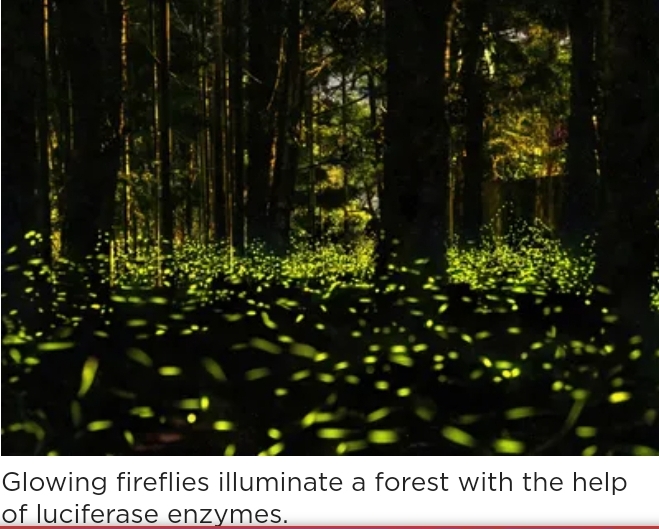Luciferase refers to a group of bioluminescence producing enzymes that enable researchers to study gene expression and regulation.
What Is Luciferase?
Luciferase is a group of enzymes that oxidize a substrate known as luciferin to produce light.1 For bioluminescence, the firefly luciferase enzyme catalyzes the oxidation of D-luciferin in the presence of oxygen (O2), adenosine triphosphate (ATP), and magnesium ions (Mg2+). This catalytic reaction converts the excited oxyluciferin molecule to its ground state, emitting visible light. Bioluminescence observed in various organisms may utilize different chemical processes. However, they all share a common feature: the production of light through enzyme-catalyzed oxidation reactions.
History of Luciferase Enzymes
Although bioluminescence has been observed for many centuries, its application in biomedicine is relatively recent. Scientists traced back the first reference of bioluminescence to the Greek philosopher Aristotle in 384-322 BCE.2 Almost three centuries later, Gaius Plinius Secundus, a Roman author, conducted an in-depth study on bioluminescence. He discovered many animals that had illuminating capacity such as purple jellyfish, mollusks, fireflies, and glowworms.
French pharmacologist Raphael Dubois observed that a specific constituent of the click beetle was essential for bioluminescent reactions. He extracted two components from beetle abdomens, naming the substrate luciferine and the enzyme responsible for the reaction luciferase.2
Over many years, scientists across the world conducted multiple experiments and established that luciferase enzymes and substrates are species-specific. For example, the Gaussia and Renilla luciferases use coelenterazine as their substrate to emit blue to cyan light, while Cypridina uses its own genus-specific luciferin to generate blue light.3,4 In 1985, scientists made a milestone scientific breakthrough by cloning the firefly luciferase (FLuc) in Escherichia coli, enabling an unlimited source for this enzyme.



